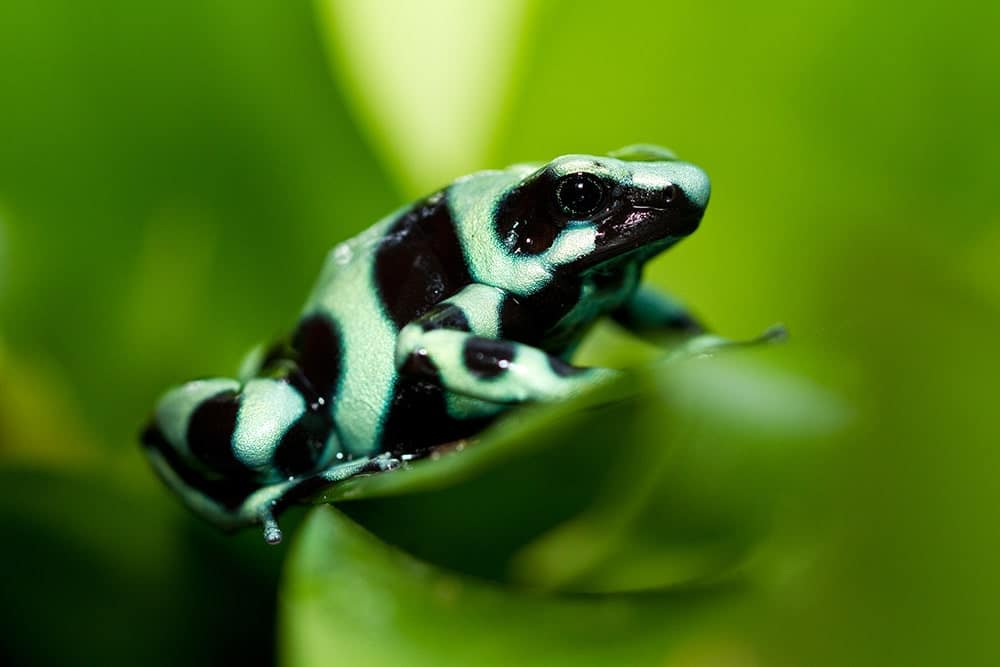All frog species found in Hawaii were introduced either accidentally or intentionally, and there are no native species on the island. In fact, there are no native amphibians or terrestrial reptiles at all. Some species of frogs have become invasive in Hawaii and have become a real concern for native insect populations and the birds that feed on these insects, as these frogs can reach incredibly high population densities.
There are species of frog found in Hawaii, most of which are relatively harmless to the native animals but some of which are of real concern. Read more about them here!
Additionally, you can click below to see each category:

The 2 Invasive Frogs Found in Hawaii
1. American Bullfrog

| Scientific name: | Rana catesbianus |
| Longevity: | 7–9 years |
| Good to own as a pet?: | Yes |
| Legal to own?: | Yes |
| Adult size: | 5–8 inches |
| Diet: | Carnivorous |
One of the largest frogs in North America, the American Bullfrog can be found on all the main islands of Hawaii and was likely introduced in the late 1800s. These massive frogs are usually green or green-brown in color, with dark brown spots, and can reach weights of up to 1.5 pounds! Due to their big size, prolific breeding habits, and voracious appetites, these frogs can quickly become problematic because they can wipe out native insects and small mammals terrifyingly quickly.
2. Coqui Frog
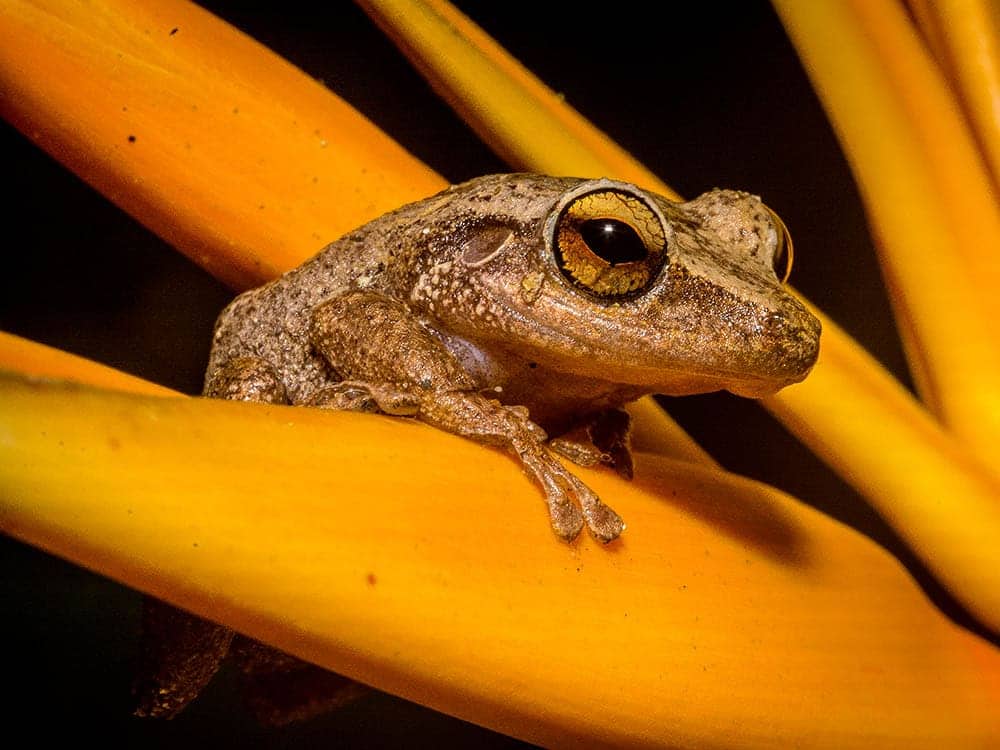
| Scientific name: | Eleutherodactylus coqui |
| Longevity: | 1–6 years |
| Good to own as a pet?: | No |
| Legal to own?: | No |
| Adult size: | 1–2 inches |
| Diet: | Carnivorous |
The Coqui is a relatively small tree frog that is usually yellow to dark brown in color, with a round, plump body. These frogs have become a massive problem in Hawaii because they have no natural predators to keep them in check, and populations have reached an estimated 55,000 frogs per hectare in some parts of Hawaii. This is devastating to native insects and can severely disrupt the balance of native ecosystems.

The 2 Poisonous Frogs Found in Hawaii
3. Green and Black Poison Dart Frog
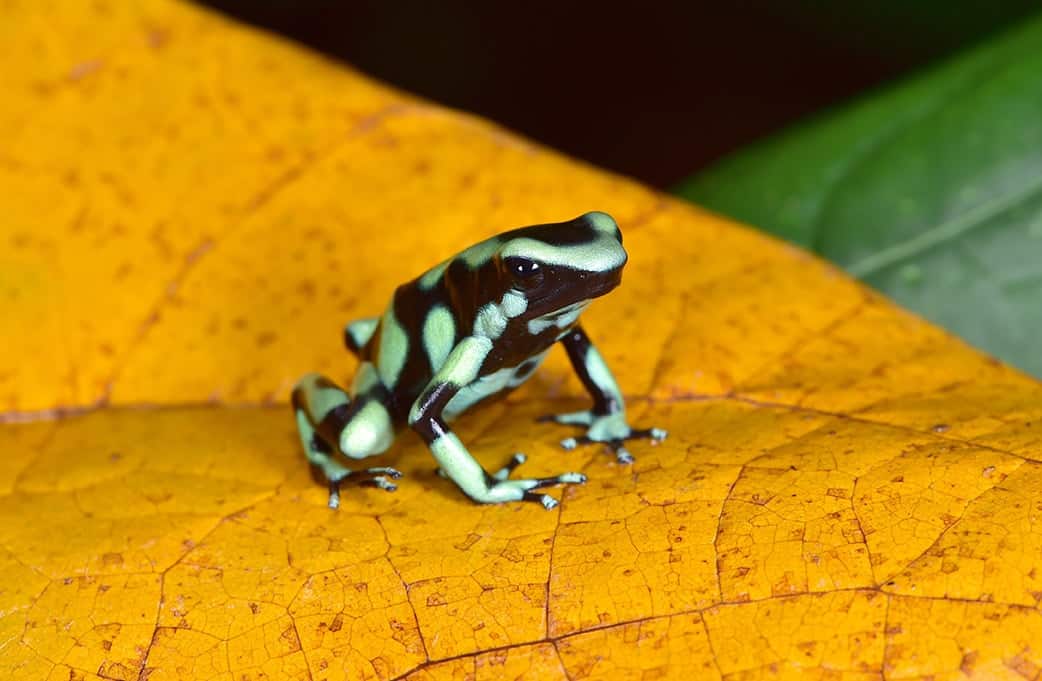
| Scientific name: | Dendrobates auratus |
| Longevity: | 4–6 years |
| Good to own as a pet?: | Yes |
| Legal to own?: | No |
| Adult size: | 1–2.5 inches |
| Diet: | Carnivorous |
The Poison Dart Frog is a beautiful amphibian, with a metallic green coloring and black spots, although there are tons of variations around the world. These frogs are poisonous, as their name suggests, although they pose no danger to humans unless they are ingested. The species was originally introduced to Hawaii in the 1930s to control non-native insects, and they are excellent climbers, often found high up in trees. They are popular in the pet trade due to their unique, colorful markings.
4. Cane Toad
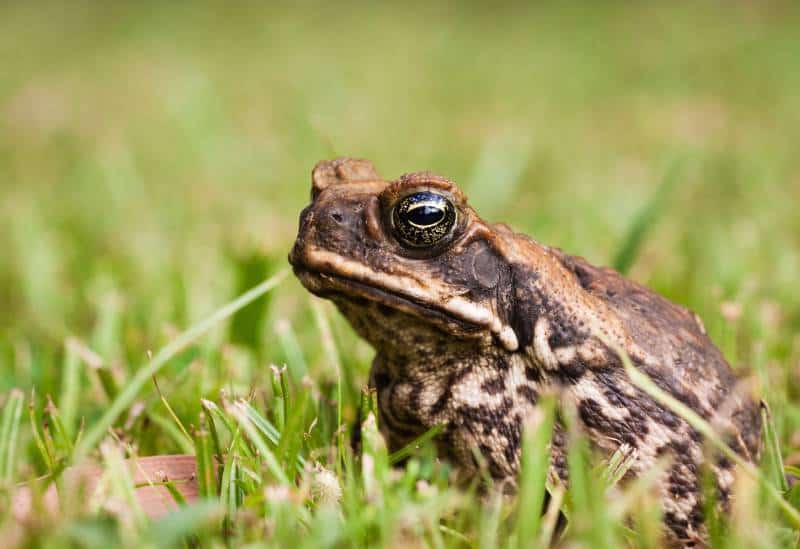
| Scientific name: | Rhinella marina |
| Longevity: | 10–15 years |
| Good to own as a pet?: | Yes |
| Legal to own?: | Yes |
| Adult size: | 6–9 inches |
| Diet: | Carnivorous |
The Cane Toad is the only toad found in Hawaii, and apart from the American Bullfrog, they are the largest frog found on the islands. They were first introduced to Hawaii in the early 1930s in an attempt to control sugar cane beetles, although this was largely unsuccessful. Cane Toads secrete a milky substance from glands on their skin that can burn your eyes and inflame your skin should you come into contact with it. While this is non-lethal and relatively harmless to humans unless ingested, it can be harmful to pets and may even result in death.

The 3 Small Frogs Found in Hawaii
5. Cuban Treefrog
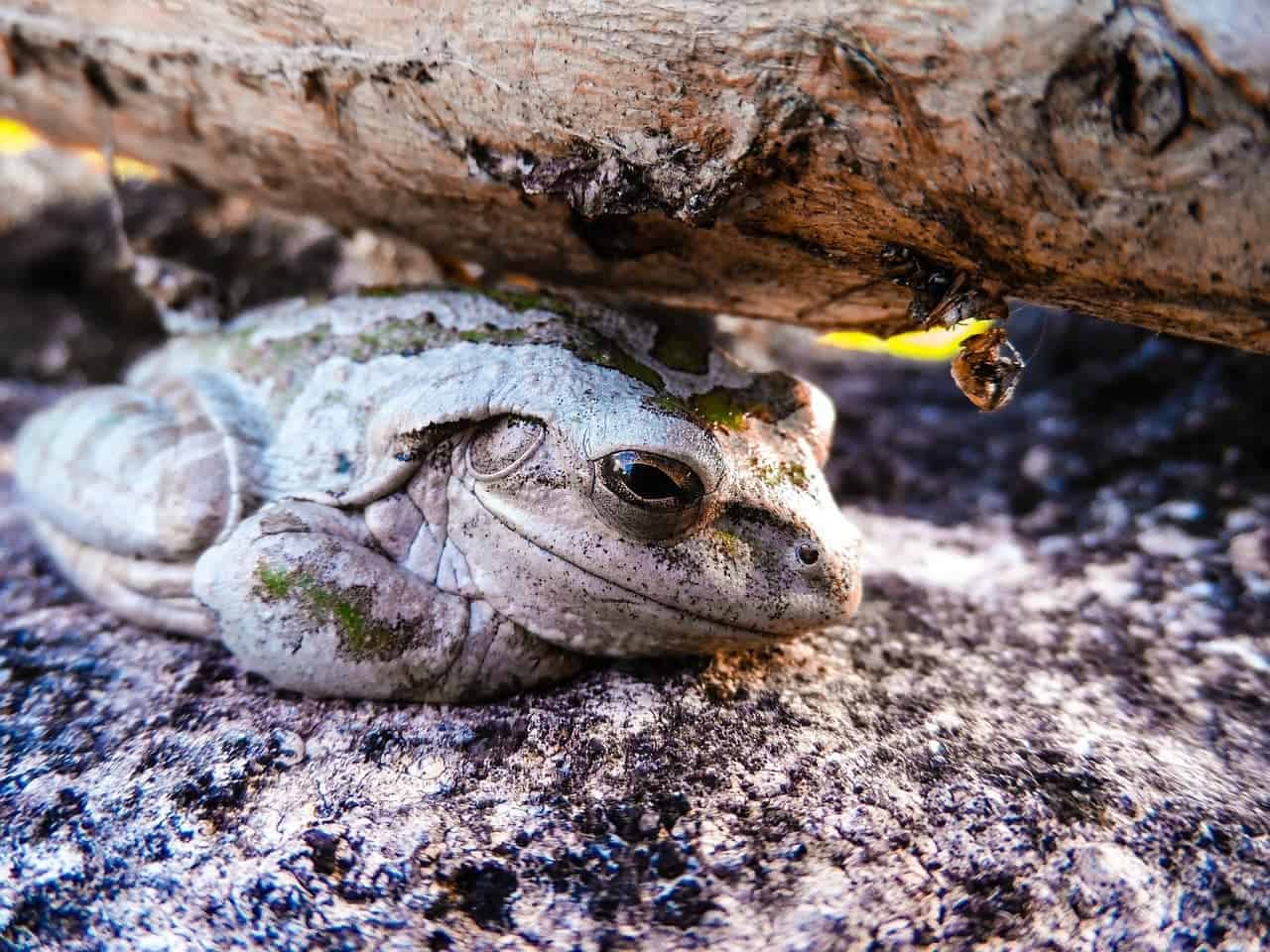
| Scientific name: | Osteopilus septentrionalis |
| Longevity: | 5–10 years |
| Good to own as a pet?: | Yes |
| Legal to own?: | No |
| Adult size: | 1–4 inches |
| Diet: | Carnivorous |
As the name suggests, Cuban Tree Frogs are native to Cuba and were most likely brought to Hawaii through the pet trade, as they are popular pets around the world. They are one of the largest treefrog species in the United States and can vary in color from dark green to pale grey and will often change color to match their environment. They are known to be somewhat aggressive toward other frog species and have voracious appetites, leading them to become invasive species in many parts of the world, including Hawaii.
6. Greenhouse Frog
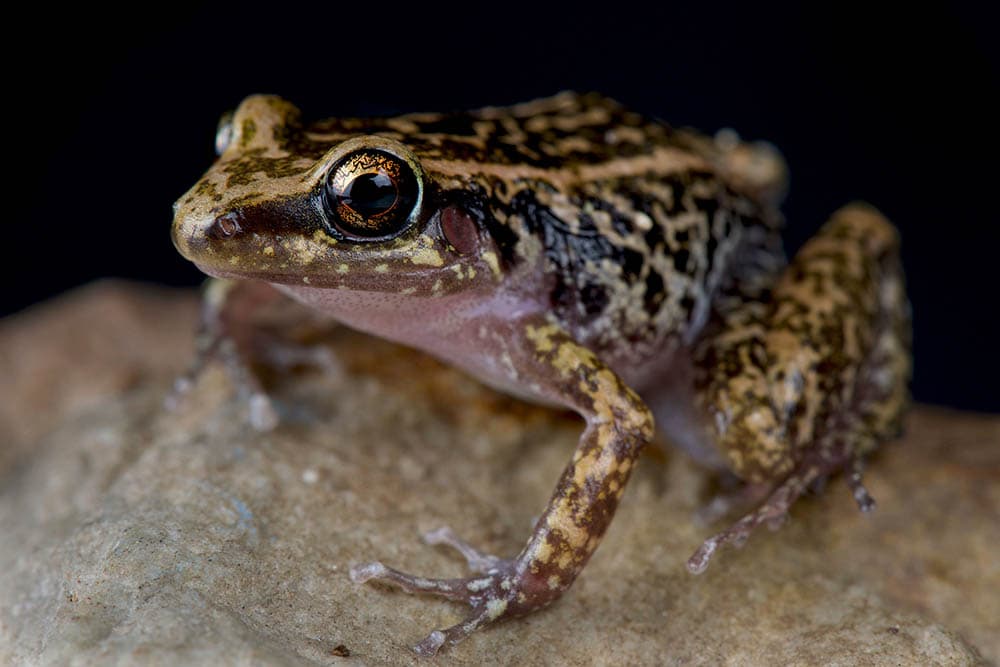
| Scientific name: | Eleutherodactylus planirostris |
| Longevity: | Unknown |
| Good to own as a pet?: | No |
| Legal to own?: | No |
| Adult size: | 0.5–1.5 inches |
| Diet: | Carnivorous |
The Greenhouse Frog was most likely imported to Hawaii through potted plants and landscape materials, and their population has risen rapidly, causing ecological problems for the native insect populations. They are copper brown in color, with mottled black spots on their backs, and they are fairly similar in appearance to the Coqui Frog. They are a hardy, adaptable species that can thrive in a variety of environments, causing them to be invasive in many different parts of the world.
7. Wrinkled Frog
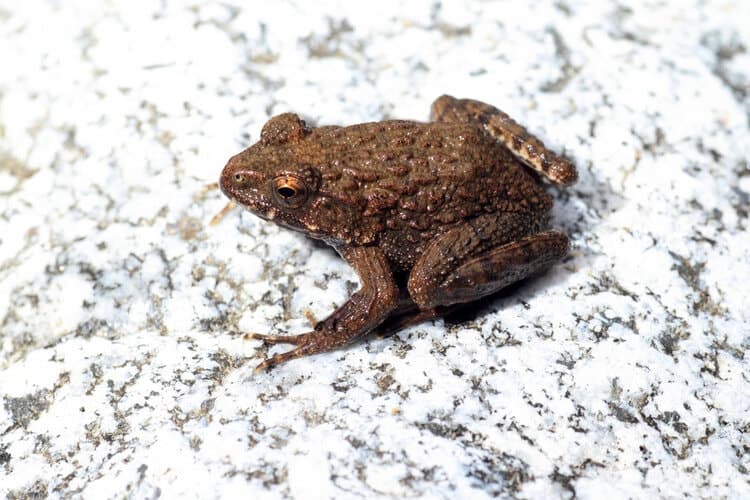
| Scientific name: | Glandirana rugosa |
| Longevity: | 4–6 years |
| Good to own as a pet?: | No |
| Legal to own?: | Unknown |
| Adult size: | 1–2 inches |
| Diet: | Carnivorous |
The Wrinkled Frog is native to Japan and was first introduced to Hawaii in the late 1800s to control pests. As the name suggests, these frogs have warty and wrinkled skin that is dark brown to green with black spots and a grey throat with small green spots. They can most often be found on the forest floor among fallen leaves and are known to be wary of humans and difficult to capture. While they are fairly prolific on the Hawaiian islands, their effect on the ecosystem is not yet fully understood.

Conclusion
There are no native amphibians on the Hawaiian islands, and many of the frogs now present in Hawaii are considered invasive and problematic for native insect populations. Most of these frogs are prolific breeders, and their populations can grow extremely rapidly due to the lack of natural predators. That said, many frog species are small and relatively harmless to native insects, although their environmental impact is still not fully understood.
Related Read:
Featured Image Credit: Peter Krejzl, Shutterstock
